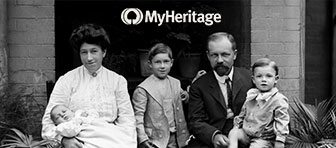BennettC on Family Tree Circles
Journals and Posts
George Charles BENNETT of The Pinery, South Australia
George Charles BENNETT born c1841 married Sarah Egan FEATHERSTONE in
1873 in Port Adelaide, South Australia. George and Sarah had 4
children and Sarah died in 1880. George remarried to Lucy COLLINS (nee
MINEAR) and George and Lucy had 6 children in The Pinery, South
Australia.
I am trying to find where George Charles BENNETT was born and some
information about his family. His father is Thomas BENNETT, but I
don't know George's mother's name.
Can anyone help fill in some of the gaps?
COOMBE, Ephraim Henry (1858-1917)
Journalist and politician, was born on 26 August 1858 at Gawler, South Australia, eldest son of Ephraim Coombe, a farm-labourer and shopkeeper from Devon, and his wife Mary, n?e Lock. Educated at St George's day school, Gawler, he worked as a grocery assistant in Gawler and at his father's general store at Willaston. On 1 March 1880 in Adelaide he married Sarah Susannah Fraser Heywood of Willaston.
Coombe was local literary correspondent and Hansard reporter for the South Australian Register in 1888. Two years later he became editor of the lively Gawler Bunyip and in 1897 was one of the few country journalists selected to be an official Hansard reporter for the Adelaide Federal Convention. Coombe was always active in temperance, the arts and education: in Gawler he belonged to many cultural, sporting and benevolent societies and was a keen Freemason.
He represented South Australia in both cricket and chess. He was a governor of the Adelaide Public Library, Museum and Art Gallery in 1901-06, vice-president of the Institutes' Association and editor of its journal in 1904-08. In his patriotic History of Gawler (1908) he voiced satisfaction that his 'lot was cast in a community whose institutions and citizenship are so favourable to the development of a robust and intelligent manhood and womanhood'.
Coombe was president of the Barossa Political Reform League from 1888; twice defeated in attempts to enter parliament as an independent in 1896 and 1899, in 1901 he won Barossa in a by-election and held it till 1910. At first he was seen as a progressive but his politics changed. He had early allied himself with A. H. Peake, and was his Opposition whip in 1904; next year Coombe was government whip and chairman of committees in the Price-Peake coalition of 1905-09.
A founding member of the Liberal and Democratic Union in 1906, Coombe was its president in 1907-09. On the breaking of the Liberal-Labor coalition in 1909, in June-December he was commissioner of crown lands and immigration, and minister of agriculture, in Peake's cabinet. When the ministry was restructured to include the Opposition leaders Coombe stepped down. He was re-elected as L.D.U. member for Barossa in 1910, but when it amalgamated with the Liberal Union he refused to sign the new pledge. He re-formed the L.D.U with the support of the Northern Democratic Association, but was defeated at Barossa in 1912. In 1908-09 he had chaired an important royal commission on wheat marketing.
In 1914 Coombe left the Bunyip and moved to Adelaide to edit the labour Daily Herald where he was seen as 'rigidly truthful, singularly just, transparently honest'. He joined the United Labor Party, led the party ticket for Barossa in 1915 and re-entered the House of Assembly, alienating some friends. Within the party he lived down suspicion about his former ties and came to be looked upon as one of its leaders. He spoke out strongly against the closure of German schools and in October 1916 led public campaigns against conscription and the intimidation of male voters in the referendum in 1917. He was prosecuted under the War Precautions Act at Tanunda in March, fined ?10 and bound over to keep the peace.
Coombe did not oppose the war: his three sons were in the forces and he resented the stigma of disloyalty, which contributed to a 'heavy burden of worry'?several commentators wrote that 'incessant persecution' over this issue precipitated his early death. Coombe collapsed with a cerebral haemorrhage while addressing a U.L.P. meeting at Semaphore and died on 5 April 1917.
Survived by his wife, four sons and two daughters, he was buried in Willaston cemetery. In 1930 a commemorative marble monument was erected at Tanunda, and the town of Coombe in the State's (South Australia) south-east district was named for him.
- Displaying 1-2 of 2 Journals
- PAGE:
- 1
- of1


